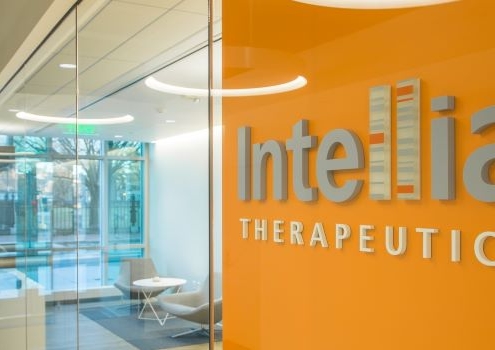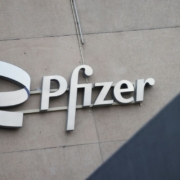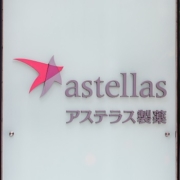Intellia seeks to broaden gene editing’s potential with full-spectrum approach
Intellia seeks to broaden gene editing’s potential with full-spectrum approach
Published: Apr 03, 2023
By Heather McKenzie
BioSpace
With several recent milestones, Intellia Therapeutics is setting a solid foundation for gene editing in rare diseases like hereditary angioedema (HAE) and transthyretin (ATTR) amyloidosis with an eye toward broader patient populations.
Laura Sepp-Lorenzino, Ph.D., EVP and chief scientific officer, joined Intellia in 2019 after leading RNAi and gene therapy efforts at Vertex, Alnylam and Merck. She told BioSpace she’d had an eye on Intellia since the company’s founding in 2014 and was drawn by its full-spectrum approach, which includes both in vivo and ex vivo efforts.
“I was impressed because they were daring,” she said. “This was a lot to take on for a start-up, but they kept making steady progress.”
When approached by John Leonard, president and CEO, Sepp-Lorenzino saw a great opportunity to help catalyze these emerging platforms.
A Full-Spectrum Approach
This full-spectrum approach has enabled Intellia to be a gene editing pioneer.
In June 2021, the company announced the first-ever clinical data supporting the safety and efficacy of in vivo CRISPR gene editing in humans.
Intellia began by targeting severe diseases for which there is a clear genetic driver and critical unmet medical need.
“Starting in diseases in which there is a clear risk/benefit [profile] was very important for us,” Sepp-Lorenzino said.
On the in vivo side, this includes NTLA-2001, a collaboration with Regeneron for ATTR amyloidosis, and NTLA-2002 for HAE.
On the ex vivo side, Intellia is utilizing lipid nanoparticles (LNPs) to transiently deliver CRISPR/Cas9 to a range of cells, including T cells and NK cells. As opposed to the more common electroporation technique, this approach enables a large number of edits to be introduced, Sepp-Lorenzino said.
“Electroporation is harsh on the cells. They take a significant hit with regards to viability and expansion potential and there is DNA damage,” she said. “The beauty of [the LNPs] is that now the cells are in really good shape so we can expand many, many-fold from one donor.”
As needed, Intellia also can deploy its base editor to do multiplex knockouts, maintaining high fidelity in the edits and eliminating structural variants. Cell therapy is often prohibitively expensive and Sepp-Lorenzino explained that this innovation could help lower costs.
Opening More Therapeutic Avenues
These platforms are stepping stones to Intellia’s ultimate goal, which is to harness the full potential of CRISPR-based technologies to create new classes of genetic medicine.
With both NTLA-2001 and NTLA-2002, Intellia is using a gene knockout technique, which is a technique to inactivate a specific target gene.
“By having demonstrated we can do that, it now opens up a new avenue for other diseases in which introducing an in vivo [approach] could be transformative,” Sepp-Lorenzino said.
It also allows Intellia to increase the complexity of its edits to treat more diseases.
The company is also leveraging its in vivo liver insertion technology in alpha-1 antitrypsin deficiency. This platform enables scientists to insert a missing or defective gene, Sepp-Lorenzino said.
Another advantage of in vivo gene editing is that liver cells are expected to repopulate carrying the edit made, she added. This is in contrast to traditional AAV gene therapy where there is a loss of expression over time as the cells divide.
“Insertions are also relevant for childhood diseases in which the liver and kidneys are growing. You want to make sure that the edits made have the potential to lead to permanent expression,” she said.
Stepping Stones
More common diseases are also on the horizon for Intellia.
“As we begin to demonstrate safety and efficacy in these rare diseases where the benefit/risk justifies bringing a new technology to patients, it opens up the opportunity to develop CRISPR-based therapies for more prevalent applications,” Sepp-Lorenzino said.
This could include cardiovascular and metabolic diseases or chronic infections.
Before targeting these broader populations, however, Sepp-Lorenzino said it is important for Intellia to demonstrate a solid safety profile and the long-term behavior of its gene editing therapies in different populations.
Intellia also continues to build its gene editing and delivery toolkits.
Its gene editing portfolio includes multiple Cas enzymes, a base editor, and a DNA writing platform. Intellia gained the latter in the February 2022 acquisition of Rewrite Therapeutics and further developed it internally, leveraging the company’s expertise.
On the delivery side, Intellia has pioneered the use of LNPs for in vivo and ex vivo use. Its aim for in vivo is to “modify the characteristics of those particles so you can use them for other organs, in addition to the liver,” Sepp-Lorenzino said.
This approach has potential in sickle cell disease (SCD).
Sepp-Lorenzino was involved with the development of Vertex and CRISPR Therapeutics’ SCD gene therapy, exa-cel. While exa-cel has the potential to be “game changing,” she said it would not be accessible to the majority of patients. This is because exa-cel leverages an ex vivo approach, which she said is incredibly costly.
Intellia’s in vivo SCD approach involves redirecting LNPs from the liver to the bone marrow in sufficient quantities to introduce an edit.
If successful, patients would get an infusion and “that would be it,” Sepp-Lorenzino said.
“The reality is that the prevalence of sickle cell disease is enormous outside of first world countries…so it’s important we find ways of addressing everybody.”
With myriad tools and modalities available in gene editing today, Sepp-Lorenzino said she is like a kid in a candy store.
“What’s important for Intellia is to not be limited by the type of edit that we need to introduce,” she said. “We’re not a cleavase-based company. We’re not a base editing company. We’re not a DNA writing company. The point is to be a gene editing company with the ability to make the best therapies for patients.”
Source: BioSpace









